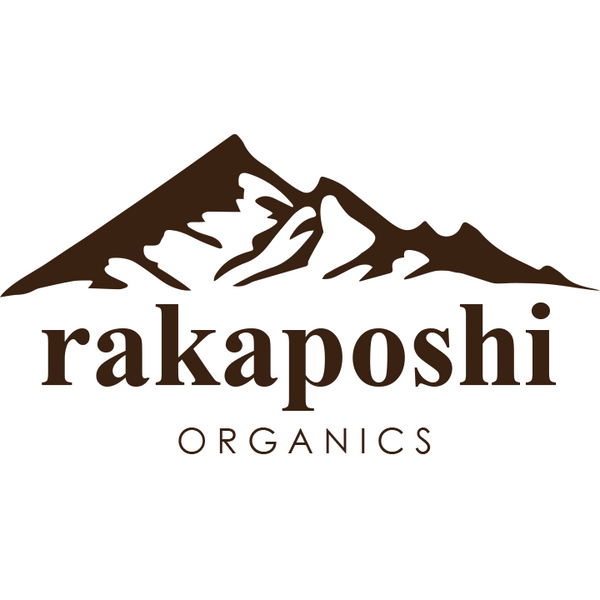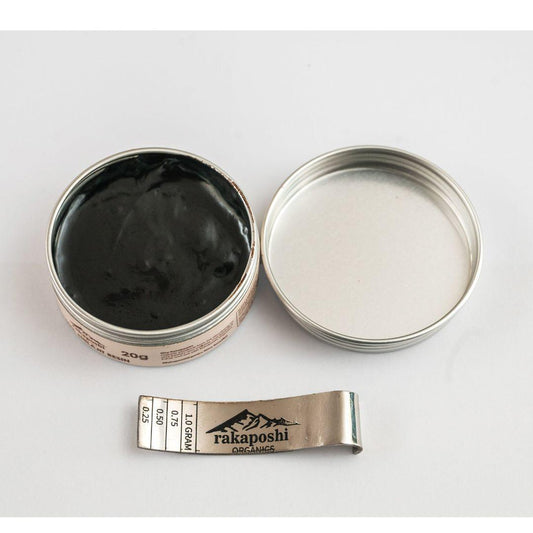
Graveyard of Empires: Alexander the Great's Struggle in the Hindu Kush and the Cultural Heritage of a Timeless Land
Share
Introduction: The King of Darkness
As the setting sun cast long shadows over the treacherous mountains, Alexander the Great's once-invincible army trudged through the unforgiving terrain of modern-day Afghanistan, their spirits dampened, their numbers decimated. In the distance loomed the towering peak of Mount Tirich Mir, the highest in the Hindu Kush at 7,708 meters (25,289 feet), known to the locals as the "King of Darkness." The ominous silhouette of this giant watched over their struggle, a fitting metaphor for the bleakness they felt.
These soldiers had crossed the world in conquest, sweeping through Persia, Egypt, and beyond—but now, in the shadow of this dark king, they faced their greatest challenge yet. The mountains, ancient and indomitable, seemed to conspire against them, and in this harsh land, empires crumbled.
Alexander, too, would feel the weight of this land. His dream of conquering the known world met its match not in an opposing army but in the unforgiving grip of the Hindu Kush and the vast, desolate regions beyond. This land, known throughout history as "the Graveyard of Empires," was no stranger to foreign invaders—few left with the same strength they arrived with.
While armies have come and gone, the mountains remain, and the people who call these mountains home have developed deep cultural connections to the land and its resources, including traditional substances like shilajit.
The Graveyard of Empires
A History of Failed Conquests
The region at the crossroads of Central Asia and the Indian subcontinent has long been a point of strategic interest for conquerors and empires. The nickname "Graveyard of Empires" reflects centuries of failed attempts at conquest:
Historical invasions:
- Alexander the Great (327 BCE): Struggled through the Hindu Kush, losing many soldiers to harsh conditions
- British Empire (1839-1919): Three Anglo-Afghan Wars, all ending in British withdrawal or defeat
- Soviet Union (1979-1989): 10-year occupation ending in withdrawal and contributing to Soviet collapse
- United States (2001-2021): 20-year war ending in withdrawal
Why Empires Fail Here
Geographic challenges:
- Extremely rugged terrain with high mountain passes
- Harsh climate with extreme temperatures
- Limited infrastructure and supply routes
- Difficult to navigate and control
Cultural factors:
- Fiercely independent tribal societies
- Deep knowledge of local terrain
- Guerrilla warfare tactics
- Strong resistance to foreign occupation
- Cultural cohesion despite ethnic diversity
The pattern: The inhospitable landscape, combined with the determination of local populations, has consistently defeated even the most powerful military forces. The terrain itself is a ruthless opponent, and the people who inhabit the region have made survival even more difficult for would-be conquerors.
Yet, amid the trials of war and conflict, the people here have thrived—hardened by their environment and sustained by deep cultural knowledge of the land and its resources.
Alexander's Struggles in the Hindu Kush
The Campaign of 327 BCE
In 327 BCE, Alexander the Great set his sights on India, the jewel beyond the Hindu Kush, and began one of the most arduous journeys of his military career. His army was already weary from years of relentless campaigning, but the journey through Afghanistan and the mountains was something altogether different.
Challenges faced:
Environmental hardships:
- Extreme cold at high altitudes
- Avalanches and treacherous passes
- Lack of food and resources
- Altitude sickness
- Harsh weather conditions
Military challenges:
- Disease spreading rapidly in harsh conditions
- Weakened and demoralized troops
- Guerrilla tactics from local tribes
- Natural fortifications favoring defenders
- Extended supply lines
Cultural resistance:
- Tribes native to these mountains fought Alexander's forces with intimate knowledge of the terrain
- They were accustomed to surviving in conditions that broke foreign armies
- Local populations used the land itself as a weapon
The Toll on Alexander's Army
The region's resistance wasn't limited to the terrain. As Alexander's army struggled through the Hindu Kush, it became clear that while the men of Macedonia had conquered many lands, these mountains were unconquerable in a different way—they conquered the conquerors through attrition.
Historical accounts suggest:
- Significant loss of soldiers to cold, disease, and harsh conditions
- Breakdown of morale and discipline
- Many soldiers never recovered their strength
- The campaign fundamentally changed the army's capabilities
While Alexander pressed on, reaching India and claiming victories, his army was never the same. Many historians argue that the campaign in these mountains, more than any battle, broke the spirit of the great conqueror and contributed to his eventual decision to turn back.
The land had its revenge, claiming the lives and health of many soldiers, leaving behind only stories of struggle.
Shilajit: Cultural Significance in Mountain Communities
Traditional Use and Cultural Context
While the land challenged armies, it also sustained its people with resources that had been part of their culture for generations. Among these is shilajit—a resin that exudes from the cliffs of the Himalayas and surrounding ranges, formed over millennia from decomposed plant matter and minerals.
What shilajit is:
- Sticky, tar-like resin from high-altitude rocks
- Contains fulvic acid, humic acid, and trace minerals
- Formed over centuries through geological processes
- Found in Himalayas, Hindu Kush, Karakoram, and other ranges
Cultural significance:
- Used in traditional Ayurvedic and local medicine systems for centuries
- Part of cultural heritage in mountain communities
- Collected using traditional knowledge passed down through generations
- Considered valuable in traditional wellness practices
Important context: Traditional use and cultural significance don't equal proven health benefits. Shilajit has extensive traditional use, but scientific research on health effects is very limited (covered in previous blogs).
Traditional Beliefs and Practices
In traditional systems:
- Shilajit was part of "rasayana" (rejuvenation) protocols in Ayurveda
- Often given to travelers and those facing physical challenges
- Used as part of comprehensive traditional wellness practices
- Believed to support vitality and endurance (traditional belief, not proven effect)
Cultural practices:
- Collected during specific seasons when it exudes from rocks
- Purified using traditional methods (sun-drying, water purification)
- Used in small amounts as part of broader lifestyle practices
- Never used in isolation but as part of holistic approaches
Modern perspective: While these traditional beliefs are culturally significant, they don't constitute scientific evidence for health benefits. Traditional use reflects cultural heritage and historical practices, not proven medical efficacy.
The Cultural Reverence for Nature
Sacred Mountains and Natural Resources
The people of the Hindu Kush and the surrounding regions have long maintained a deep reverence for their land. The mountains are not just a place to live but are considered sacred, having watched over their ancestors for generations.
Cultural relationship with nature:
- Mountains viewed as protectors and providers
- Nature seen as teacher and sometimes harsh disciplinarian
- Rituals, prayers, and offerings made to honor the mountains
- Deep respect for natural resources
- Sustainable harvesting practices based on traditional knowledge
Traditional worldview:
- Land and people are interconnected
- Resources are gifts that require respect and gratitude
- Survival depends on understanding and working with nature
- Wisdom comes from observing natural cycles and patterns
Shilajit in this context:
- Seen as a gift from the mountains
- Requires patience and care in collection and use
- Part of broader cultural relationship with the land
- Represents connection between people and their environment
The Unbreakable Spirit of the Region
Resilience Through Centuries
The resilience of this region is reflected in its people, who have lived through countless invasions, wars, and attempts to dominate them. They have endured, not by overpowering their enemies with force, but by outlasting them through sheer endurance and an unyielding connection to their land.
Factors in cultural resilience:
- Deep knowledge of local environment
- Strong community and tribal bonds
- Adaptation to harsh conditions over generations
- Cultural practices that support survival
- Independence and self-reliance
- Respect for and understanding of the land
Lessons from the region:
- Resilience comes from connection to place and community
- Harsh environments can forge strong cultures
- Local knowledge and adaptation matter more than external power
- Sustainability requires working with nature, not against it
Just as empires crumble and fade, those who respect the land and understand it deeply endure. The lessons of this region extend beyond its borders.
Alexander's Legacy and the Enduring Power of the Land
Historical Impact
Though Alexander the Great's journey through the Hindu Kush marked a turning point in his military career, it also left behind a lasting legacy—not of conquest, but of the limits of empire.
Alexander's legacy in the region:
- Demonstrated that even the greatest military forces can be defeated by terrain and determination
- Contributed to the region's reputation as unconquerable
- Left behind cultural influences (Greco-Bactrian kingdoms)
- Became part of local historical narratives
The land's legacy:
- Continues to challenge those who underestimate it
- Remains home to resilient cultures and communities
- Preserves traditional knowledge and practices
- Stands as testament to the power of place
His soldiers may have struggled and suffered, but the people of the region, sustained by their deep knowledge of the land, continued on. In the centuries since, many have tried to conquer the Graveyard of Empires, but the land and its people always prevail.
Modern Relevance
Lessons for Today
What we can learn:
- Respect for local knowledge and culture is essential
- Harsh environments shape resilient communities
- Connection to place provides strength and identity
- Traditional practices reflect accumulated wisdom
- Sustainability requires understanding natural systems
Shilajit in modern context:
- Traditional substance now known globally
- Represents cultural heritage of mountain communities
- Part of broader interest in traditional wellness practices
- Sourcing should respect local communities and environments
Important perspective: While shilajit has cultural and historical significance, this doesn't equal proven health benefits. It's one element of traditional mountain cultures that developed comprehensive approaches to survival and wellness in harsh environments.
What actually supports resilience:
- Strong community connections
- Deep knowledge of environment
- Sustainable practices
- Cultural continuity
- Adaptation and flexibility
- Respect for natural limits
The Bottom Line
The story of Alexander the Great's struggle in the Hindu Kush is more than military history—it's a testament to the power of place, the resilience of cultures deeply connected to their land, and the limits of external force against local knowledge and determination.
Key takeaways:
Historical lessons:
- Even the greatest empires can be defeated by terrain and determination
- The "Graveyard of Empires" earned its name through centuries of failed conquests
- Local knowledge and cultural resilience outlast military power
Cultural insights:
- Mountain communities developed deep connections to their environment
- Traditional practices like shilajit use reflect cultural heritage
- Reverence for nature shaped sustainable approaches to resources
- Resilience comes from understanding and working with the land
Modern applications:
- Respect for traditional knowledge and local cultures
- Understanding that harsh environments forge strong communities
- Recognizing limits of external power and importance of local adaptation
- Appreciating cultural heritage while being realistic about scientific evidence
About shilajit specifically:
- Has significant cultural and historical importance in mountain communities
- Traditional use reflects centuries of cultural practice
- Cultural significance doesn't equal proven health benefits
- Should be sourced ethically with respect for local communities
The mountains remain, watching over the land as they have for millennia. The people who call these mountains home continue to draw on traditional knowledge and cultural practices that have sustained them through countless challenges. And the lessons of this timeless land—about resilience, respect for nature, and the limits of empire—remain relevant today.
Discover authentic Rakaposhi Gold Shilajit—sourced from the Karakoram mountains of Gilgit-Baltistan, Pakistan, at elevations of 15,000-20,000+ feet, processed using traditional Aftabi sun-drying methods, with batch-specific testing for purity and safety. Our shilajit represents the cultural heritage of mountain communities and traditional knowledge passed down through generations. We source ethically, support local harvesters, and provide transparent information about composition and traditional use while being honest about the limited scientific research on health effects.



